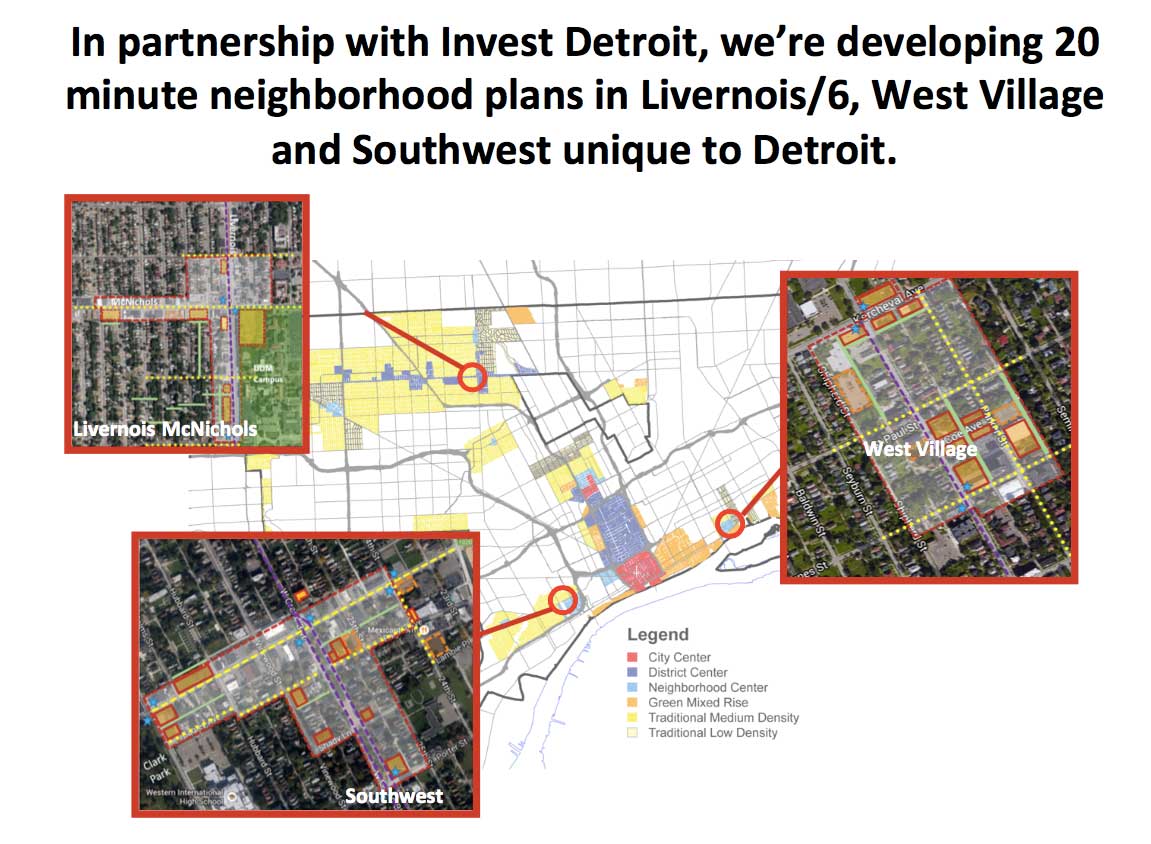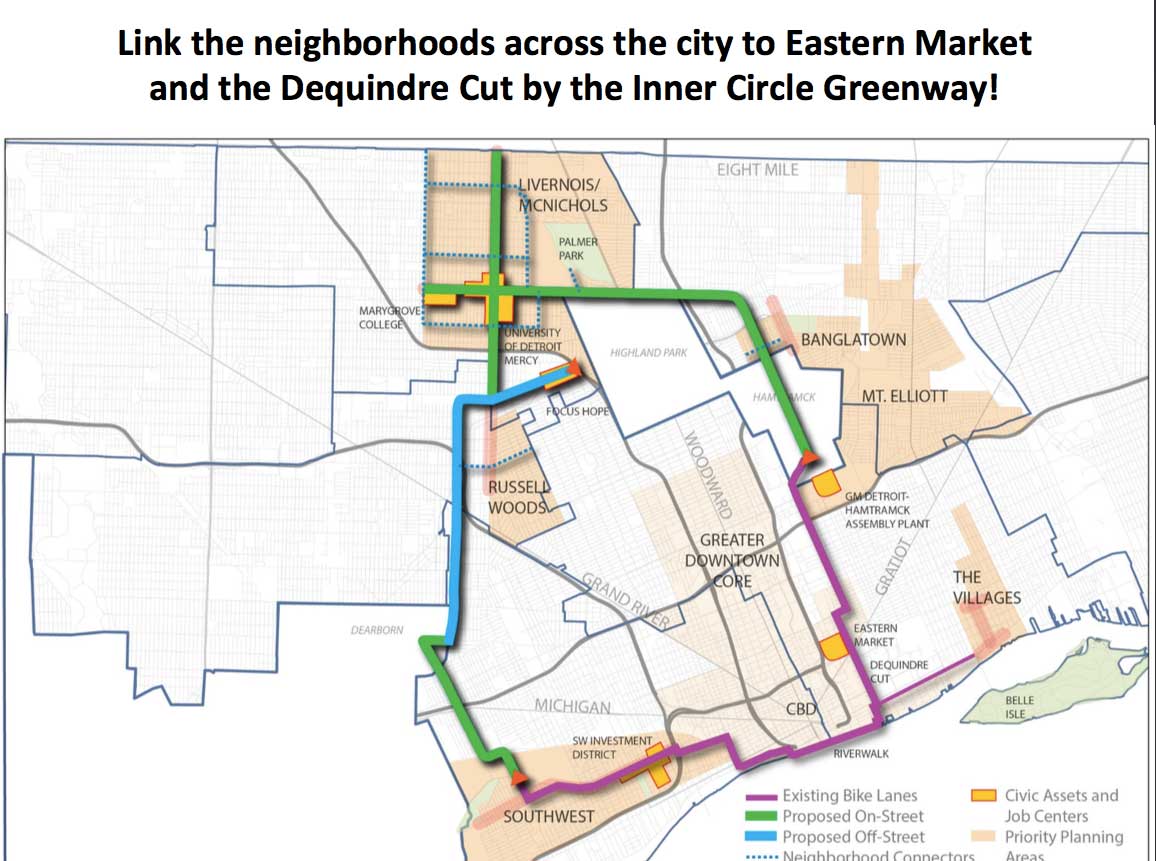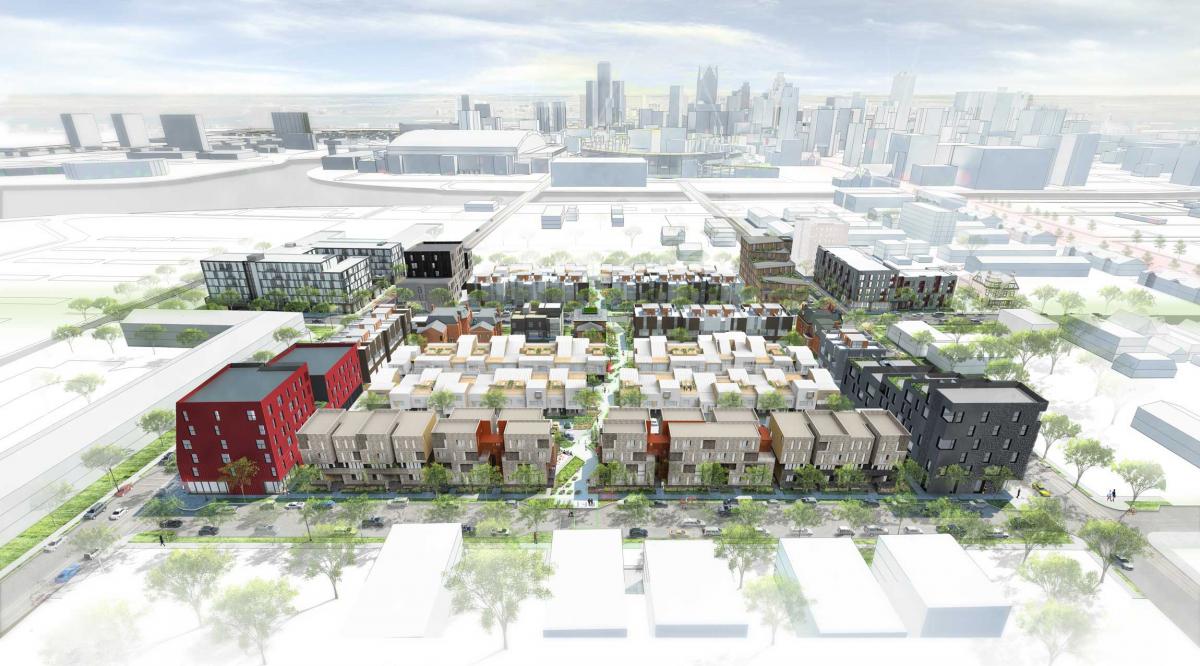
Detroit's hope in neighborhood revival
Detroit wrote the history of the motor vehicle age in America, and Detroit is one of the most automobile-oriented cities in America. Yet less than 50 percent of the adults in Detroit own a car.
That fact says a lot about how Detroit has failed, and where the city is heading in the future. Detroit’s downtown has experienced a great resurgence in recent years of new jobs and people living downtown. The center of the city has become far more livable, even as the city as a whole continued to lose population.
Downtown will be okay—that is clear from simple observation today. Detroit’s future success depends on transporting some of that prosperity to its struggling neighborhoods. The neighborhoods of the future will be far less automobile dependent and far more diverse in their built environment, city officials told the Congress for the New Urbanism Thursday.
CNU 24 in Detroit had the highest attendance in this annual event since the Great Recession, and nearly the most overall. The popularity of the event is due to people across America and Canada, which is only a five-minute drive to the south, being fascinated with the Motor City.
In 1950, we learned, Detroit was the seventh wealthiest city in the world. Six decades later the city was spiraling into bankruptcy. Now, in 2016, the city is on the rise again. The 57-year-old Mayor Mike Duggan, who was born in Detroit, told attendees that the city declined in population every year he was alive—until this year. “The population of Detroit has turned the corner,” he says.
Detroit is implementing a series of strategies to restore its neighborhoods and offer residents transportation choice.
• The 20-minute neighborhood. Borrowed from Portland, Oregon, the mayor and planning director Maurice Cox outlined this concept—where residents can easily walk or bicycle to meet all their everyday non-work needs in 20 minutes. The 20-minute neighborhood implies a diverse place with schools, shops, parks, churches, and recreational activities. Duggan points out that the city already has a fine-grained street network of urban blocks upon which to build diverse neighborhoods.

• Complete Streets. The problem in Detroit is that the streets are far too wide. Detroit was among the first cities to widen their streets for cars in the early 20th Century. Then the city built a network of Interstate highways that criss-cross the city. Then the city lost 60 percent of its population. Cars go very fast on these oversized streets, which are hard to cross on foot or bicycle. The primary arterials, especially, don’t support urbanism. Cox outlined plans to make better use of that asphalt with protected bike lanes, on-street parking, lines of street trees, rail and bus rapid transit lines, and bigger sidewalks. Using paint, the city is narrowing lanes. “You can watch the cars slow down,” he says.

• Transit. Detroit is building the Q-Line on Woodward Avenue, an investment that is spurring development through Midtown and north of downtown. The city has another streetcar line in the works and plans for bus rapid transit.
• Bicycle network. Detroit has a national grant to complete a 30-mile bicycle loop around the city. Neighborhoods to the north will be able to get to the river and downtown. About a third of this network is completed. The city is also building protected bike lanes. The bicycle infrastructure can be connected to transit. You bike to the bus-rapid transit station and put the bicycle in locked storage—taking the transit to your job, Cox says.

• Missing middle housing. In many parts of Detroit, there is little market for new development. In select areas, especially neighborhoods near the river and downtown, the market does exist for medium density housing.
Creating 20-minute neighborhoods is a tough challenge, Cox said, because of wide-spread vacancies. Yet these vacancies also are opportunities. Although Detroit’s blocks are on a grid, some of them are too long. The vacancies open the possibility of mid-block nature trails that connect important assets.
The other big challenge is the vacant buildings. The city how owns thousands of these houses due to tax delinquency. Cox says that city is now grouping these houses in blocks of six, eight, 12—and even greater numbers to achieve revitalization economies of scale and investment opportunities. “We are mapping the city and see where we have clusters of housing,” he says. “If you just renovate one house, you haven’t done much.”
In other news, Brush Park Parcels in Detroit won the Grand Prize Charter Award this year. The neighborhood of Brush Park stands between three of the city’s fastest revitalizing areas: Midtown, Eastern Market, and the Central Business District. All three have roared back to life in recent years, but Brush Park—just a five-minute walk from major cultural assets, pro sports stadiums, and a new streetcar line—sits almost 40 percent vacant.
In the 8.4-acre Brush Park Parcels, Detroit can see a preview of the neighborhood’s future. Brush Park Parcels is diverse, stays architecturally eclectic while respecting the past, and offers living options for many households.

Other winners, from all over the US and the world, were: Beaufort Civic Master Plan, South Main, Peoples Health New Orleans Jazz Market, Sansome and Broadway, Playhouse Plaza, Nanhu New Country Village, Pollin Memorial, Southern Farms, The Lofts of Washington University, Ponce City Market, Currie, Seven50: Southeast Florida Prosperity Plan, East End Transformation, Orleans Landing, Master Plan for Revitalization of the Canal System, and Twin Cities Harbor. The Rosslyn-Ballston Corridor won a special chairman’s Test of Time Award.




